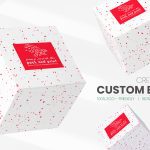Welcome to our Packaging Design and Production section! At Pack and Print, we understand the importance of packaging in making a lasting impression on your customers. Our team of skilled designers and production experts is here to guide you through the entire process, from the initial briefing.
Stand Out from the Competition with Custom Box Dielines Let’s dive into what happens during the initial briefing with our clients.
When you partner with us for your packaging design and production needs, we believe in starting with a strong foundation. The initial briefing session serves as the cornerstone of our collaboration,
where we gather essential information and insights to bring your vision to life. This is a crucial step that allows us to understand your brand, product, target audience, and specific requirements.
During the briefing, our team takes the time to listen carefully to your Stand Out from the Competition with Custom Box Dielines ideas, goals, and expectations.
We value your input and consider it integral to creating a packaging solution that aligns with your identity and resonates with your customers.
This collaborative approach ensures that we capture the essence of your brand and convey it effectively through innovative packaging designs. Stand Out from the Competition with Dielline’s Custom Box Dielines.
Here’s what you can expect during the initial briefing with our team:
Understanding Your Brand: We delve deep into your brand’s story, values, and unique selling points. By comprehending what sets you apart from your competitors, we can create packaging that reinforces your brand’s identity and appeals to your target market.
Product Analysis.
We analyze your product or range of products to gain insights into their physical attributes, dimensions, fragility, and any other relevant factors.
This information helps us determine the packaging materials, durability requirements, and functional aspects needed to protect and showcase your products effectively.
Target Audience and Market Research:
Identifying your target audience is essential for designing packaging that captures their attention and resonates with their preferences. We discuss your target market, conduct market research, and consider demographic factors to ensure that the packaging design speaks directly to your customers. Stand Out from the Competition with Dielline’s Custom Box Dielines
Design
We encourage you to share your design objectives and preferences. Whether you envision a minimalist, vibrant, elegant, or eco-friendly packaging design, we are here to transform your ideas into visually stunning and functional solution
Design Dieline:
Creating the Blueprint for Successful Packaging
In the world of packaging design, a crucial step in the process is creating a dieline. A dieline serves as the blueprint or template for designing and manufacturing packaging materials such as boxes, bags, labels, and more.
It acts as a guide, ensuring that the final product is accurately produced and meets the desired specifications. Let’s explore the significance of a design dieline and the key elements involved in its creation.
What is a Dieline?
A dieline is a two-dimensional outline that represents the net shape of a packaging product when it is unfolded and laid flat. It indicates the position and dimensions of all the structural features, such as the edges, folds, tabs, and cut lines.
By providing this visual representation, a dieline helps designers and manufacturers understand how the packaging will come together and how the artwork should be laid out.
Importance of Dielines in Packaging Design :
Accuracy and Consistency:
Dielines ensure accuracy and consistency in the production process. They help eliminate guesswork and minimize errors during manufacturing, resulting in a product that aligns perfectly with the original design intent.
Structural Integrity :
Packaging needs to be structurally sound to protect the contents inside. Dielines outline the necessary folds, tabs, and reinforcements, ensuring that the packaging can withstand transportation and handling without compromising its integrity.
Design Efficiency :
By providing a framework for the artwork and graphics, dielines enable designers to work efficiently. They help in visualizing how the design will appear on the final product, making it easier to create aesthetically pleasing packaging.
Key Elements of a Design Dieline:
Outline and Dimensions :
The dieline should accurately represent the shape and dimensions of the packaging when it is unfolded. It should include all the necessary measurements, including length, width, height, and any other specific requirements.
Structural Features:
Dielines indicate the position of various structural elements such as folds, creases, flaps, and tabs. These features determine how the packaging will be assembled and play a crucial role in its functionality.
Bleed and Safety Margins:
To ensure that the design extends to the edges without any white space, dielines often include bleed areas. Additionally, safety margins are included to prevent essential design elements from being too close to the edges and potentially getting cut off during manufacturing.
Cut Lines and Perforations:
Dielines include cut lines to indicate where the packaging will be trimmed or perforated. These lines help ensure precise cutting, folding, and scoring during production.
Printing and Finishing Considerations:
Dielines can incorporate information about printing techniques, color codes, special finishes (such as embossing or spot UV), and any other specific requirements related to the packaging’s visual appearance.
Designing and Creating Dielines:
Creating a dieline requires a combination of technical expertise, design skills, and an understanding of the packaging production process. Designers typically use specialized software like Adobe Illustrator or dedicated dieline software to generate accurate and detailed templates.
While experienced packaging designers can create dielines from scratch,
it’s often more efficient to work with professional dieline providers or packaging manufacturers who have the expertise to ensure precision and efficiency.
Conclusion :
A design dieline serves as a critical tool in packaging design, providing a visual representation and blueprint for creating successful packaging products.
By accurately representing the shape, dimensions, and structural elements, help designers and manufacturers bring their packaging concepts to life while ensuring accuracy, consistency, and functionality.
With a well-crafted dieline, designers can confidently move forward in the packaging design process, knowing that the end result will be a visually appealing and structurally sound product.






